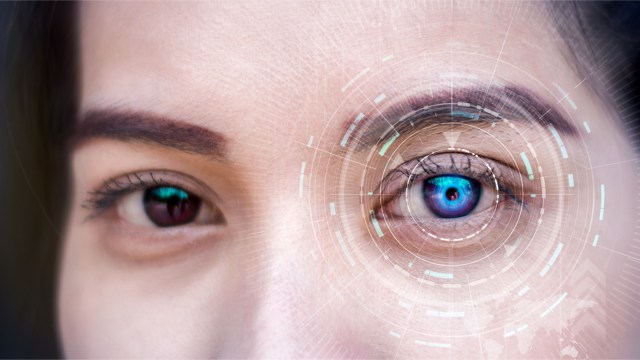Ask Ethan: Why Haven’t We Found Gravitational Waves In Our Own Galaxy?
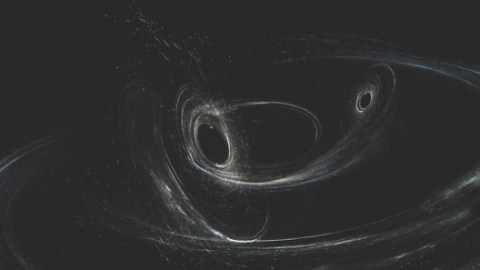
LIGO and Virgo have now detected a total of 11 binary merger events. But exactly 0 were in the Milky Way. Here’s why.
One of the most spectacular recent advances in all of science has been our ability to directly detect gravitational waves. With the unprecedented power and sensitivity of the LIGO and Virgo gravitational waves observatories at our disposal, these powerful ripples in the fabric of spacetime are no longer passing by undetected. Instead, for the first time, we’re able to not only observe them, but to pinpoint the location of the sources that generate them and learn about their properties. As of today, 11 separate sources have been detected.
But they’re all so far away! Why is that? That’s the question of Amitava Datta and Chayan Chatterjee, who ask:
Why are all the known gravitational wave sources (coalescing binaries) in the distant universe? Why none has been detected in our neighborhood? […] My guess (which is most probably wrong) is that the detectors need to be precisely aligned for any detection. Hence all the detection until now are serendipitous.
Let’s find out.

The way observatories like LIGO and Virgo work is that they have two long, perpendicular arms that have the world’s most perfect vacuum inside of them. Laser light of the same frequency is broken up to travel down these two independent paths, reflected back and forth a number of times, and recombined together at the end.
Light is just an electromagnetic wave, and when you combine multiple waves together, they generate an interference pattern. If the interference is constructive, you see one type of pattern; if it’s destructive, you see a different type. When LIGO and Virgo just hang out, normally, with no gravitational waves going through them, what you see is a relatively steady pattern, with only the random noise (mostly generated by the Earth itself) of the instruments to contend with.
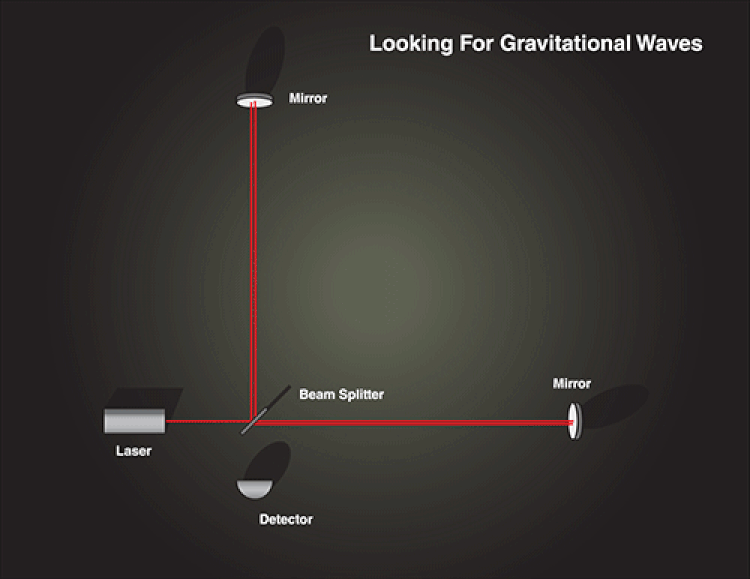
But if you were to change the length of one of these arms relative to the other, the amount of time the light spent traveling down that arm would also change. Because light is a wave, a small change in the time light travels means you’re at a different point in the wave’s crest/trough pattern, and therefore the interference pattern that gets created by combining it with another light wave will change.
There could be many causes for a single arm to change: seismic noise, a jackhammer across the street, or even a passing truck miles away. But there’s an astrophysical source that could cause that change too: a passing gravitational wave.
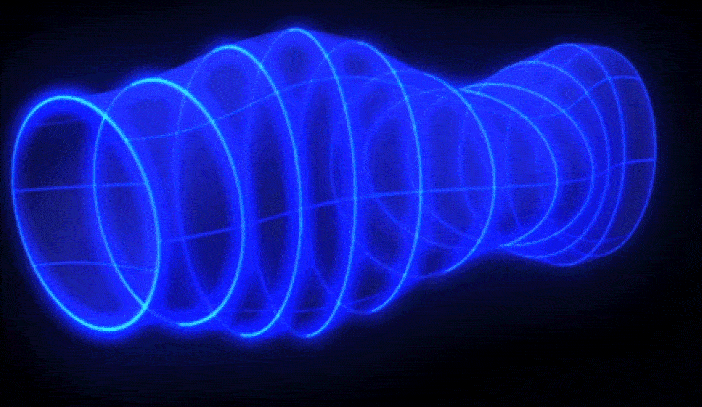
There are two keys that enable us to determine what’s a gravitational wave from what’s mere terrestrial noise.
- Gravitational waves, when they pass through a detector, will cause both arms to change their distance together in opposite directions by a particular, in-phase amount. When you see a periodic pattern of arm lengths oscillating, you can place meaningful constraints on whether your signal was likely to be a gravitational wave or just an Earth-based source of noise.
- We build multiple detectors at different points on Earth. While each one will experience its own noise due to its local environment, a passing gravitational wave will have very similar effects on each of the detectors, separated by at most milliseconds in time.
As you can see from the very first robust detection of these waves, dating back to observations taken on September 14, 2015, both effects are present.
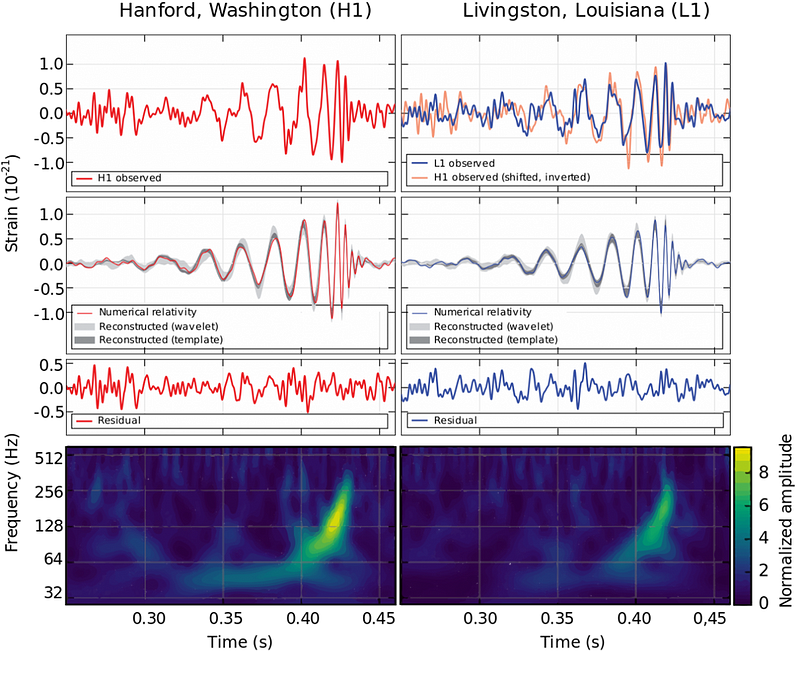
If we come forward to the present day, we’ve actually detected a large number of mergers: 11 separate ones thus far. Events seem to come in at random, as it’s only the very final stages of inspiral and merger — the final seconds or even milliseconds before two black holes or neutron stars collide — that have the right properties to be picked up by even our most sensitive detectors.
If we look at the distances to these objects, though, we find something that might trouble us a little bit. Even though our gravitational wave detectors are more sensitive to objects the closer they are to us, the majority of objects we’ve found are many hundreds of millions or even billions of light-years away.
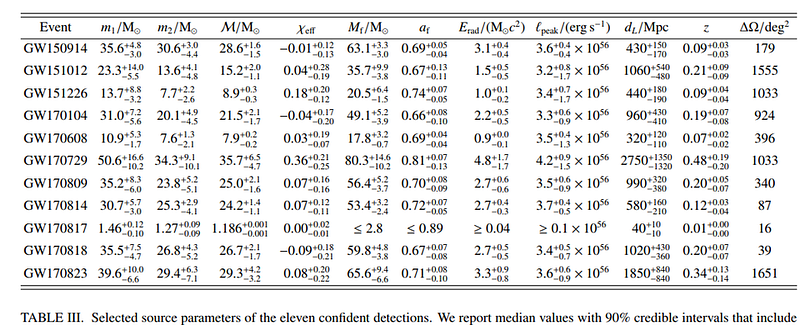
Why is this? If gravitational wave detectors are more sensitive to closer objects, shouldn’t we be detecting them more frequently, in defiance of what we’ve actually observed?
There are a lot of potential explanations that could account for this mismatch between what you’d expect or not. As our questioners proposed, perhaps it’s due to orientation? After all, there are many phenomena in this Universe, such as pulsars or blazars, that only appear visible to us when the correct electromagnetic signal gets “beamed” directly to our line-of-sight.
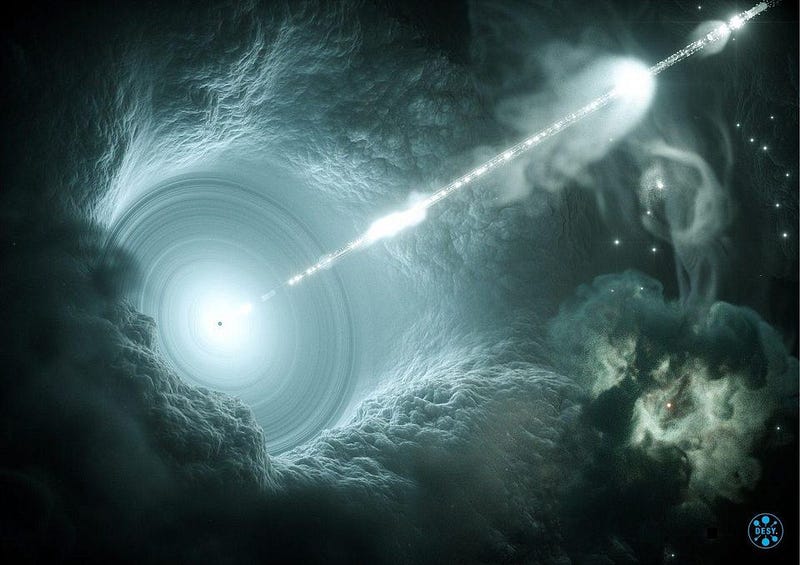
It’s a clever idea, but it misses a fundamental difference between the gravitational and electromagnetic forces. In electromagnetism, electromagnetic radiation gets generated by the acceleration of charged particles; in General Relativity, gravitational radiation (or gravitational waves) are generated by the acceleration of massive particles. So far, so good.
But there are both electric and magnetic fields in electromagnetism, and electrically charged particles in motion generate magnetic fields. This allows you to create and accelerate particles and radiation in a collimated fashion; it doesn’t have to spread out in a spherical pattern. In gravitation, though, there are only gravitational sources (masses and energetic quanta) and the curvature of spacetime that results.
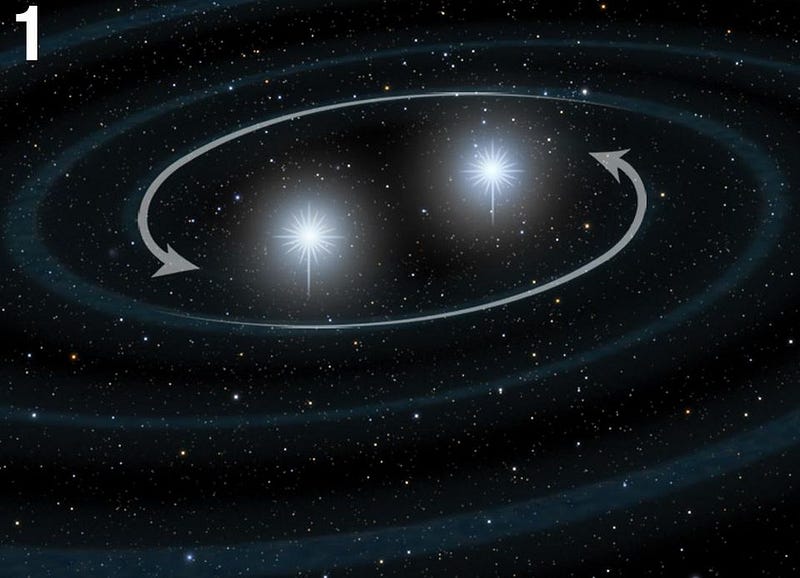
As it turns out, it doesn’t really matter whether we see an inspiraling and merging gravitational wave source face-on, edge-on, or at an angle; they still emit gravitational waves of a measurable and observable frequency and amplitude. There may be subtle differences in the magnitude and other properties of the signal that arrives at our eyes that are orientation-dependent, but gravitational waves propagate spherically outward from a source that generates them, and can literally be seen from anywhere in the Universe so long as your detector is sensitive enough.
So why is it, then, that there aren’t gravitational waves from binary sources detected in our own galaxy?
It might surprise you to learn that there are binary sources of mass, like black holes and neutron stars, orbiting and inspiraling right now.
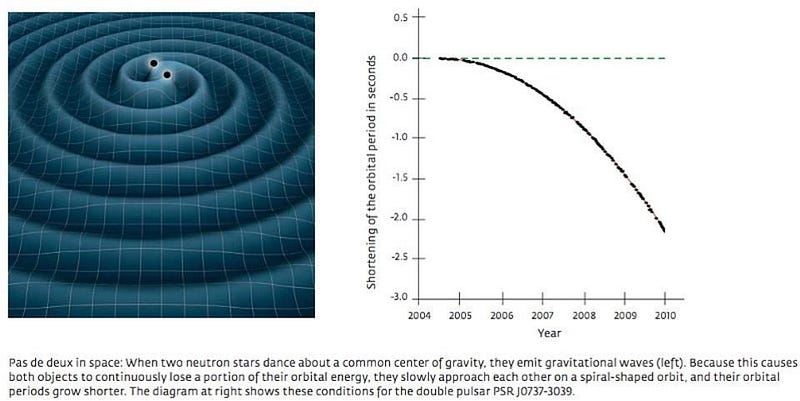
Long before gravitational waves were directly detected, we spotted what we thought was an ultra-rare configuration: two pulsars orbiting one another. We watched their pulse time vary in a way that showcased their orbital decay due to gravitational radiation. Many pulsars, including multiple binary pulsars, have since been observed. In every case where we’ve been able to measure them accurately enough, we see the orbital decay that shows yes, they are emitting gravitational waves.
Similarly, we’ve observed X-ray emissions from systems that indicate there must be a black hole at the center. While binary black holes have only been discovered in two instances from electromagnetic observations, the stellar-mass black holes we know of have been discovered as they accrete or siphon matter from a companion star: the X-ray binary scenario.
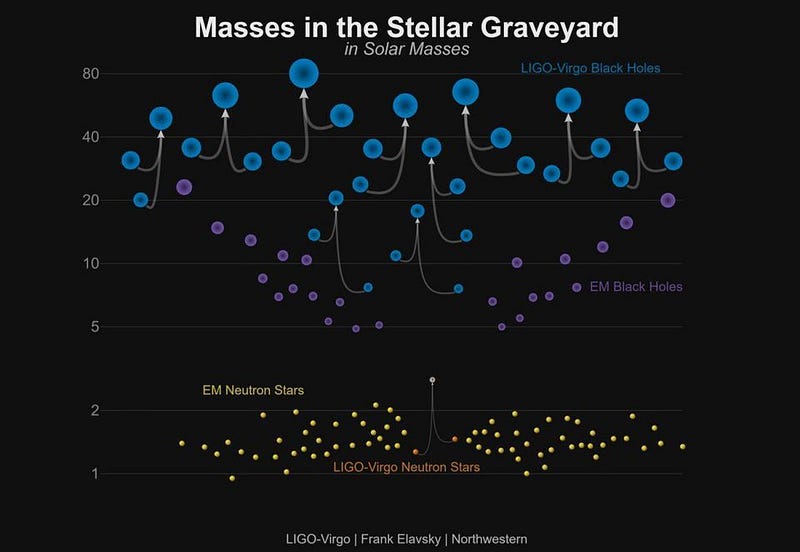
These systems are:
- abundant within the Milky Way,
- inspiraling and radiating gravitational waves away to conserve energy,
- which means there are gravitational waves of specific frequencies and amplitudes passing through our detectors,
- with the sources generating those signals destined to someday merge and complete their coalescence.
But again, we have not observed them in our ground-based gravitational wave detectors. And there’s a simple, straightforward reason for that: our detectors are in the wrong frequency range!
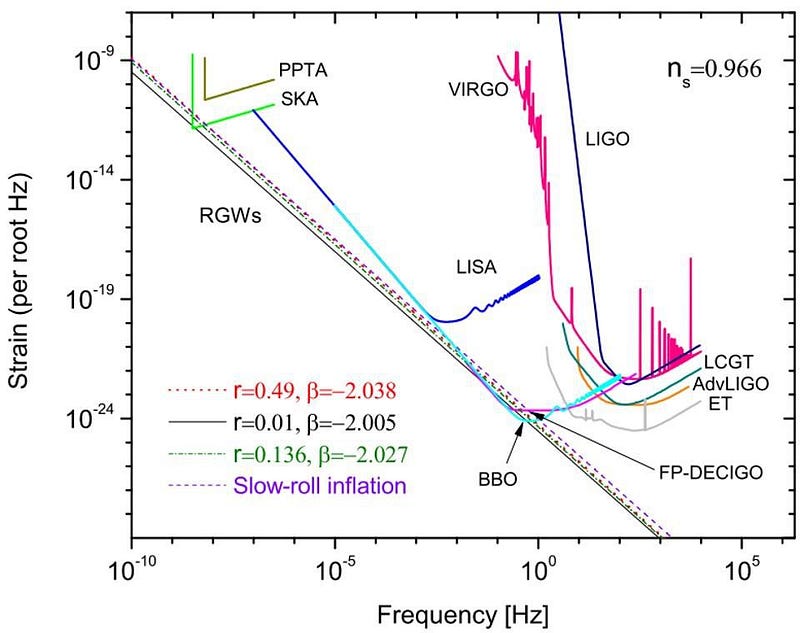
It’s only in the very, very last seconds of coalescence that gravitational waves from merging binaries fall into the LIGO/Virgo sensitivity range. For all the millions or even billions of years that neutron stars or black holes orbit one another and see their orbits decay, they do so at larger radial separations, which means they take longer to orbit each other, which means lower frequency gravitational waves.
The reason we don’t see the binaries orbiting in our galaxy today is because LIGO’s and Virgo’s arms are too short! If they were millions of kilometers long instead of 3–4 km with many reflections, we’d have already seen them. As it stands right now, this will be a significant advance of LISA: it can show us these binaries that are destined to merge in the future, even enabling us to predict where and when it will happen!
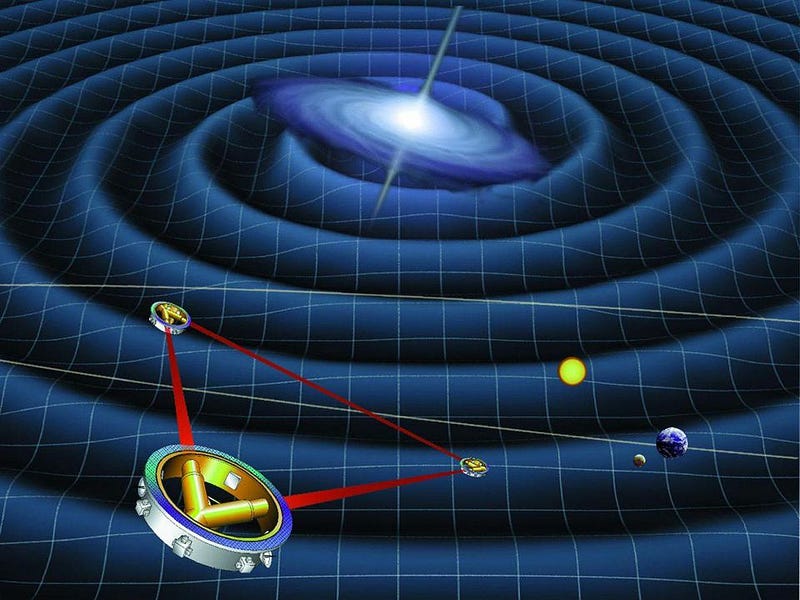
It’s true: during the time that LIGO and Virgo have been operating, we haven’t seen any mergers of black holes or neutron stars in our own galaxy. This is no surprise; the results from our gravitational wave observations have taught us that there are somewhere around 800,000 merging black hole binaries throughout the Universe in any year. But there are two trillion galaxies in the Universe, meaning that we need to observe millions of galaxies in order to just get one event!
This is why our gravitational wave observatories need to be sensitive to distances that go out billions of light-years in all directions; there simply won’t be enough statistics otherwise.
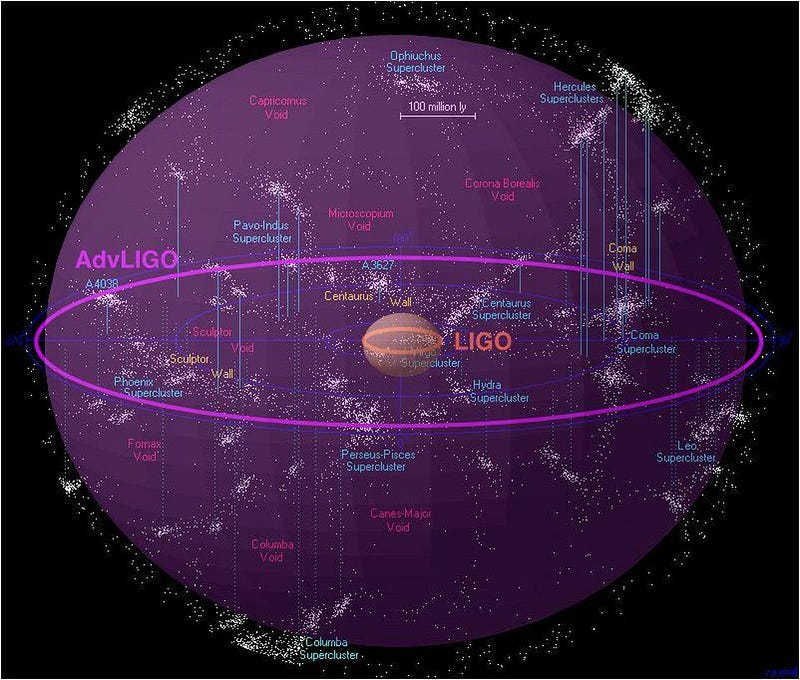
There are plenty of neutron stars and black holes orbiting one another all throughout the Universe, including right here in our own Milky Way galaxy. When we look for these systems, with either radio pulses (for the neutron stars) or X-rays (for the black holes), we find them in great abundances. We can even see the evidence for the gravitational waves they emit, although the evidence we see is indirect.
If we had more sensitive, lower-frequency gravitational wave observatories, we could potentially detect the waves generated by sources within our own galaxy directly. But if we want to get a true merger event, those are rare. They might be aeons in the making, but the actual events themselves take just a fraction of a second. It’s only by casting a very wide net that we can see them at all. Incredibly, the technology to do so is already here.
Send in your Ask Ethan questions to startswithabang at gmail dot com!
Ethan Siegel is the author of Beyond the Galaxy and Treknology. You can pre-order his third book, currently in development: the Encyclopaedia Cosmologica.




